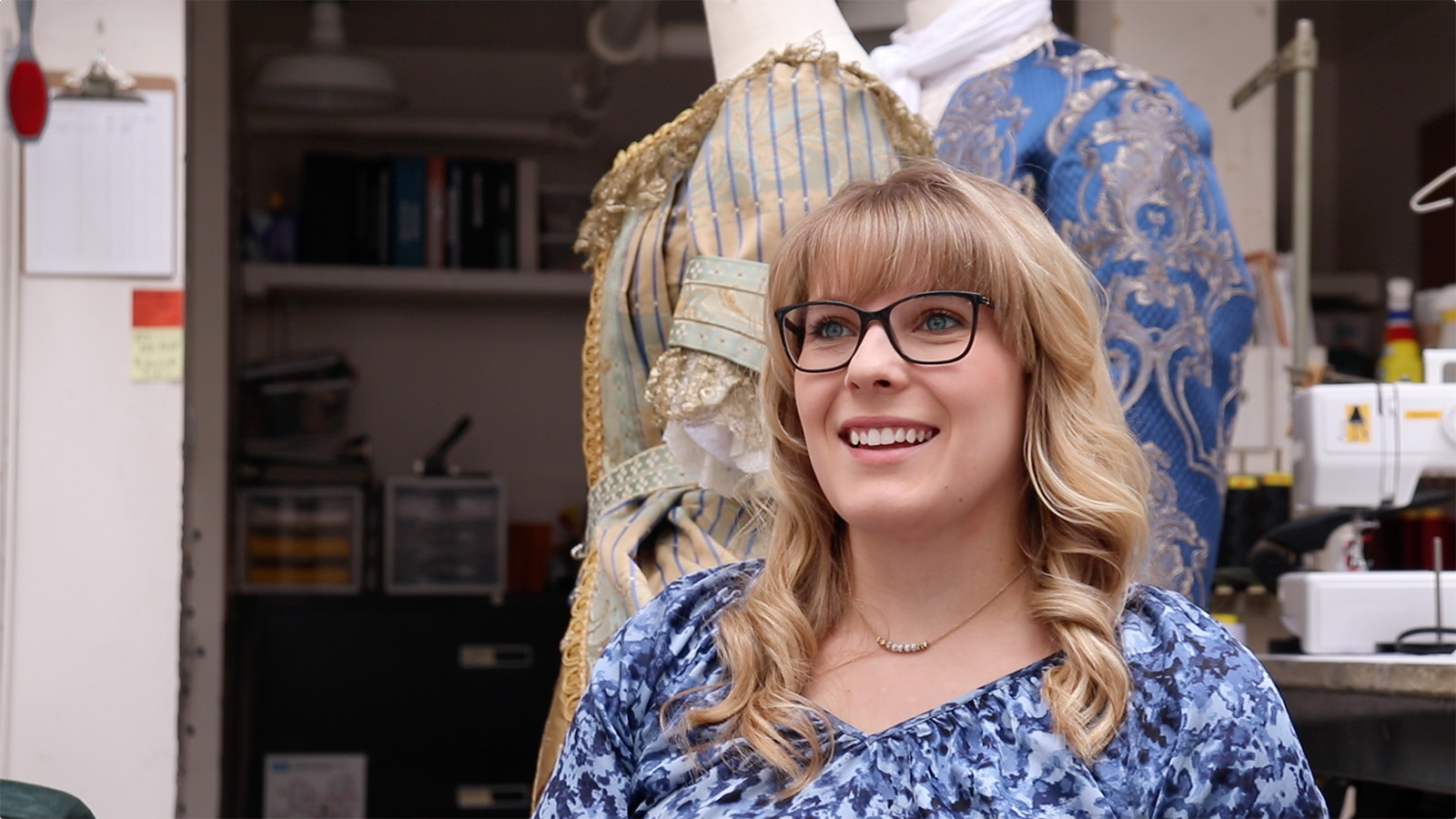Costumes in ‘Juana’ bring 17th-century feminist’s story to life

Graduate student Alexa Weinzierl served as the costume designer for Opera UCLA’s production of “Juana,” which follows the life of 17th-century feminist Sor Juana. (Natalie Tsang/Daily Bruin)
"Juana"
Nov. 22-24
Ralph Freud Playhouse
$25
By Phillip Leung
Nov. 21, 2019 4:10 p.m.
The main attraction of an opera may be the music, but in “Juana” the actors’ costumes are equally vital to the story.
Opera UCLA’s production, based on professor Alicia Gaspar de Alba’s novel “Sor Juana’s Second Dream,” runs from Nov. 22 to Nov. 24 at the Freud Playhouse. The production follows the life of Sor Juana Inés de la Cruz, a 17th-century feminist scholar and author during the Spanish Golden Age. Graduate student Alexa Weinzierl, the costume designer for “Juana,” said the production’s costumes provide necessary context for the characters and enhances their storytelling.
“It’s about so much more than a superficial appearance and just putting someone on stage that looks pretty,” Weinzierl said. “It’s about thinking about their background, how that character came to be in their story, and what clothes they would truly wear to make them themselves.”
[Related: Cast finds parallels between Nazi Germany-satirizing play and modern politics]
Weinzierl said the process of designing the costumes began in April, starting with a read-through of the script. She said she first approached the script as actor, thinking solely about the characters’ story and motivation rather than immediately thinking about the costume logistics. After reviewing the character’s stories, Weinzierl said she had to first meet with the director to understand her vision before she could begin the sketching process. Eventually, Weinzierl used acrylic paint on a black canvas for her sketches to capture the vibrant colors of 17th-century apparel and convey the darker plot elements of Juana’s story.
The darker aspects stem from the protagonist’s life – she was a nun who actively resisted a patriarchal society that tried to silence her work as a scholar, said Chicano and Chicana studies professor Gaspar de Alba. As a co-writer of the libretto and consultant for “Juana,” Gaspar de Alba said the production’s pieces were all authentic, closely recreating portraits of Juana in the form of set designs and costumes, lending themselves to the story of a feminist that deserves more recognition.
“She was advocating for a woman’s right to education 300 years before feminists in the U.S. started doing the same thing,” Gaspar de Alba said. “We owe her a lot of debt in terms of getting women’s writing to be recognized, published and made available in public discourse.”
While Weinzierl initially prioritized historical accuracy when first approaching the costumes, she said she realized the story was more about Juana’s perspective and her inner psyche. Weinzierl said this more emotional take on Juana’s story affected her designs, such as the scapular the nuns wears. The historically accurate costume in this case would be composed of sackcloth materials like wool, but she said such fabrics would appear very flat on stage. Instead, Weinzierl opted for a fabric with a larger weave and stronger texture to provide a more dynamic and dramatic effect.

In that sense, the fabric of a costume can communicate with the audience, Weinzierel said. Specifically, the viceroy and contessa’s costumes are ones intended to portray an otherworldliness that Juana has never encountered before. So to depict the contessa’s status as a powerful woman, Wienzierl said she included stripes in her costume for a sharper and stronger presence. Then for the viceroy, Wienzierl leaned towards brocades, a fabric characteristic of the 17th century, which also imparts power and symmetry.
But to also ensure her costume designs are properly communicated to the audience, Weinzierl said she worked closely with the scenic, lighting, projection and sound designers. Luz Gaitan, a graduate student at the UCLA School of Theater, Film and Television and lighting designer for “Juana,” said it was particularly important to consider how a costume’s fabric interacts with the stage lights.
[Related: Storyteller mimes historic Apollo 11 moon landing at Royce Hall]
Gaitan said she tested several fabric samples to ensure the costumes were not changed by the lights – a white costume under a blue light, for instance, would deviate from the appearance of white Weinzierl intended. Whenever Weinzierl updated a costume or purchased a new type of fabric, Gaitan said they would communicate to ensure their designs did not negatively affect the other.
But in the end, costumes are worn by the actors, and Weinzierl said a huge part of costume design is getting the actors’ input during fittings. She said she had to consider the actors’ interpretations of their characters while also updating the garments for a better match between the actor’s body and the costume’s silhouette. With costumes being one of the last steps in helping the actors truly feel like their characters, Wienzierl said her designs would not work without collaboration across all departments.
“It is definitely not a one player game for sure,” Weinzierl said. “It is a team sport and none of us would be able to execute what we have executed without the opinions and collaboration with each other.”

